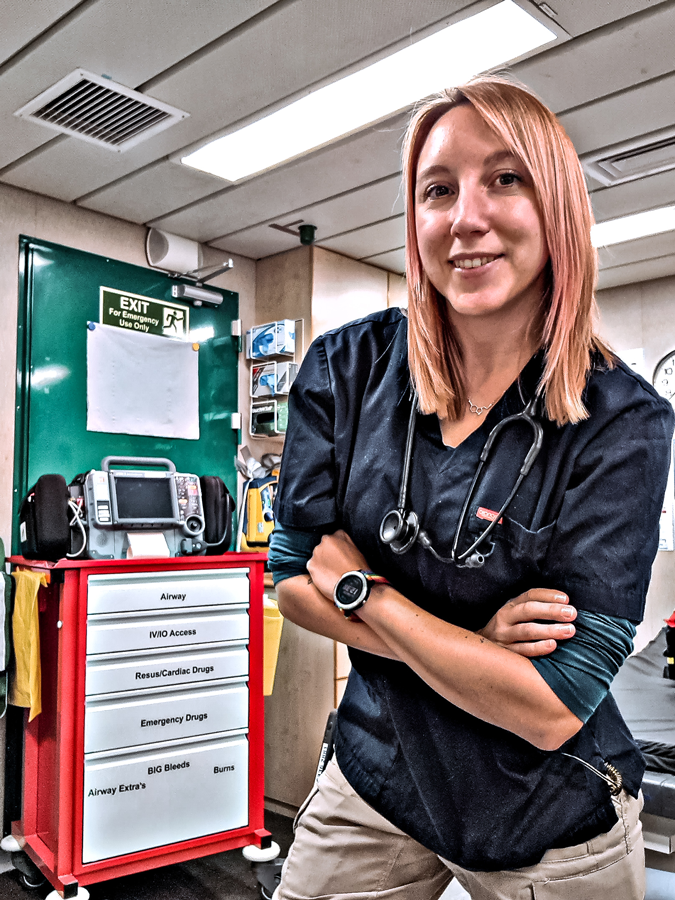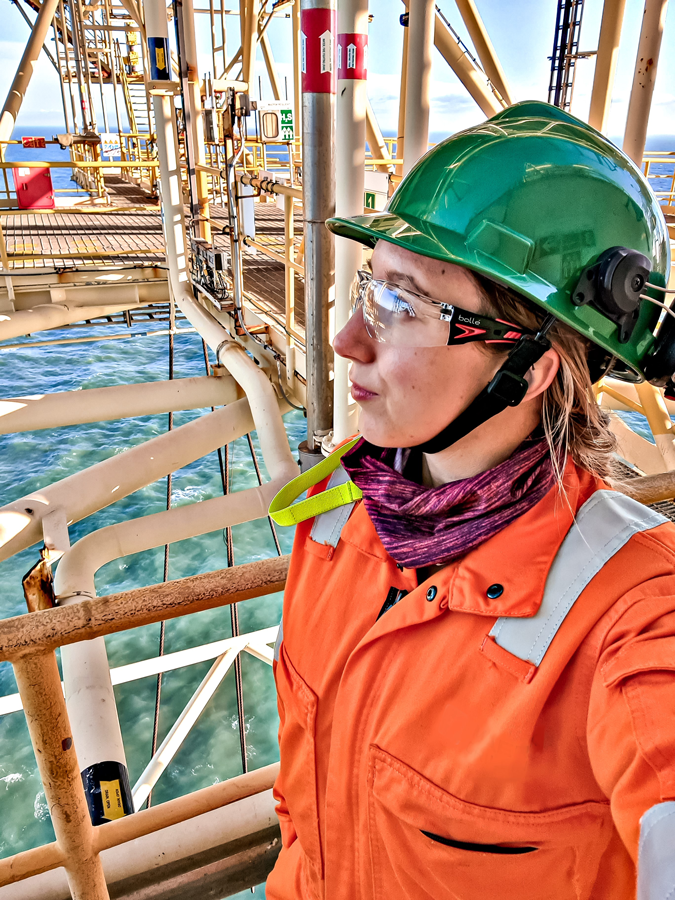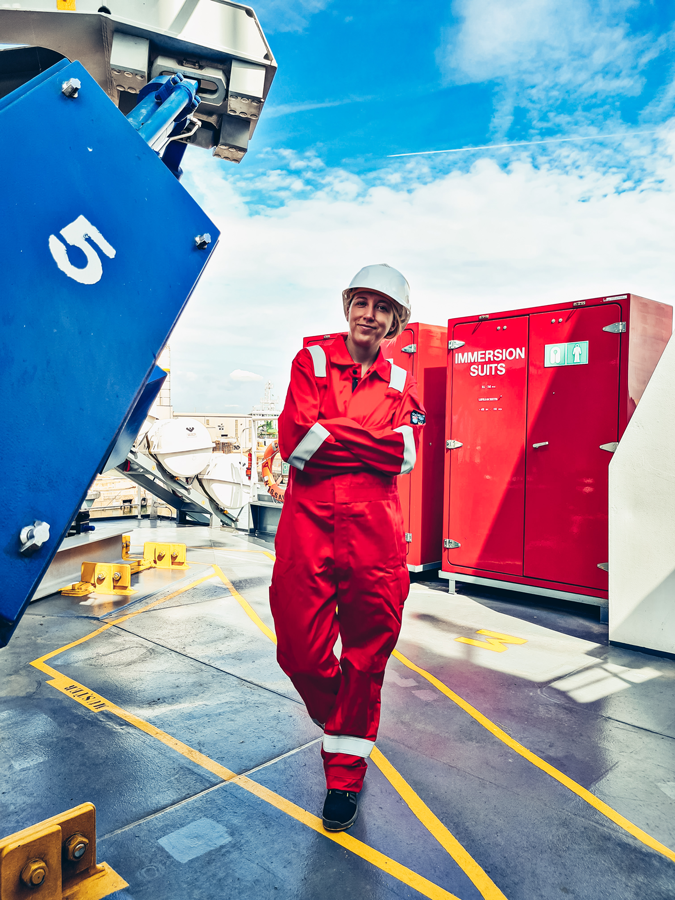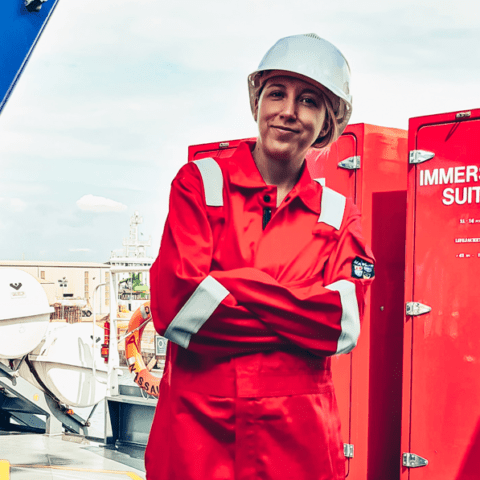You never know what a day as a medic is going to look like. This is true wherever you work, but especially as a remote medic. As an offshore medic, I am the only trained healthcare provider onboard. From the moment I arrive offshore, it’s “go” time. I am in work mode 24/7 for the next 21 days. I am responsible for emergency and primary care of the crew, as well as some of the training for the rescue and first aid teams, and other less pure healthcare tasks, such as water management and food and hygiene inspections.
On average, per trip, I can see between two to four consultations a day (not counting current pandemic issues) and some out-of-hours emergencies. COVID-19 is still creating havoc, taking a lot of our time, and causing logistical nightmares. Space offshore is limited, so it is not easy to isolate crew. This environment would make it very easy for the virus to circulate, so we have to act quickly and drastically and most operators still opt for isolating and removing cases. I think we all have heard enough about C19, so this is as much as I am going to talk about it.
0545 – My alarm goes off and I struggle to get out of bed and get dressed while I ask myself “What am I doing here?” I am not a morning person and anyone who has worked with me would tell you as much, but I need to be out of the cabin by 0600 so the stewards can come in and clean.

0600-0700 – My shift has not officially started yet, so I hide in the clinic and use this time to do some personal admin if the internet allows or go out to see the sunrise. Sunrises and sunsets offshore are some of the moments I appreciate most.
0700 – I am open for business. I start by doing the daily checks at the clinic, making sure there is no faulty equipment and everything is fully charged and ready, should I need it. A crew member knocks on the door and I have my first consultation of the day. Luckily, it’s something I can easily solve with some over the counter medication. I proceed to give the pertinent advice and instructions and let them go before I complete the electronic medical records. Next, I will visit the radio room to check on today’s chopper as I assist with some of the heli-admin tasks. Weather looks good, both the crew at the beach and the departing crew have checked in, and the flight seems to be on time.
0930 – The crew change helicopter is on the way. I take the welcome cards and T-cards for the on-signers to the heli-lounge, make sure all departing crew are there, and give them a pre-flight briefing before playing the safety video.
1030 – Crew change is complete. I change the T-cards from the lifeboat stations and go back to my checks. Next, I take a water sample and analyze certain parameters to ensure the potable water is good. If any parameter is out of range, I will contact the technical leader, so they can make the necessary adjustments to the water maker.
1200 – Without realizing it, the morning has gone by and my stomach is telling me it is time for lunch. As I fast in the mornings, I am now ready for food. The chefs onboard are great and feed us tons of yummy food. Lunchtime is the same for everyone, which also means it tends to be one of the times when crew members come to the clinic if they need something not urgent – and today is no different. Some more over the counter treatments and a call to our topside doctors for some prescription meds and then I can finally go for lunch before they close. I will complete the paperwork later.

1400 – Time to get my PPE on: coveralls, safety boots, safety glasses, gloves and helmet, and I am ready to go out to the deck. During the afternoon, I will perform some of the checks I need to do outside of the clinic, then return to the clinic and continue with admin tasks and any medical consultations that present.
1600 – Similarly to lunchtime when the day crew tends to come to the clinic, the night crew usually starts visiting from 1600 to 1830 as they wake up for their shifts.
1900 – My clinic shift is officially over. I am now on call for any emergencies that may arise during the night. I close the clinic and head to the galley to have dinner where I sit with some of the deck crew to eat as we chat a bit about our days and plans.
2000 – After dinner, I have a shower and get ready for bed. One thing I learned quickly when I started my career in healthcare is that you eat and sleep when you can, even if you are not really that hungry or tired. I get into bed and read a bit or watch something on my phone before turning the lights off and calling it a day.
2350 – The duty phone wakes me up. Usually, people don’t abuse the duty phone outside of hours, so someone must not be feeling well. I ask a couple of questions and decide I need to see them in the clinic as soon as possible. I get dressed very quickly and go to the clinic, which is conveniently located in front of my cabin. The first sight of the patient brings my suspicions down a bit and, at the same time, I connect them to a monitor while I ask more questions and start taking vitals. Within a couple of minutes, I am quite confident that it is not as bad as it sounded initially. I explain this and proceed to complete a more in-depth assessment.
0100 – After the assessment, I can’t find anything pointing to a clear diagnosis. I call our topside doctors to discuss the case and a treatment plan. The duty doctor listens to the information I convey and it is decided that the patient needs to be evacuated. I have done all the investigations I can with the equipment available to rule out several potential diagnoses, but I can’t rule them out completely and, as things are not improving, further investigations are required. I inform the radio op and the OIM of the situation and we start organizing a MEDEVAC. The Coast Guard has been notified, and I prepare the patient for transfer (IV access, any medications needed, paperwork) while we wait for the helicopter.
0330 – I hand over the patient to the SAR medic, complete the electronic medical records, and the rest of the paperwork required, and call it a night. I am supposed to start my next shift in about three hours; however, rest is important for me to be at my best and it is agreed that I will open the clinic once I am rested, and should only be disturbed in case of emergency.
Offshore life is work, eat, sleep and repeat with some exercise in between, but it’s a fascinating world with some very interesting people, and I hope more women decide to join the workforce.

Tamara Gonzalez is a Spanish nurse currently working as an offshore medic on a jack-up rig in the North Sea. Her background includes specializing in emergency response and aeromedical transport, cardiac nursing and critical care. She has always been interested in unconventional paths and has also worked internationally on expeditions and military operations. In her free time, she enjoys the outdoors, especially water activities like kayaking and scuba diving, and spending time with friends and family while looking for new challenges.
Oil and gas operations are commonly found in remote locations far from company headquarters. Now, it's possible to monitor pump operations, collate and analyze seismic data, and track employees around the world from almost anywhere. Whether employees are in the office or in the field, the internet and related applications enable a greater multidirectional flow of information – and control – than ever before.



